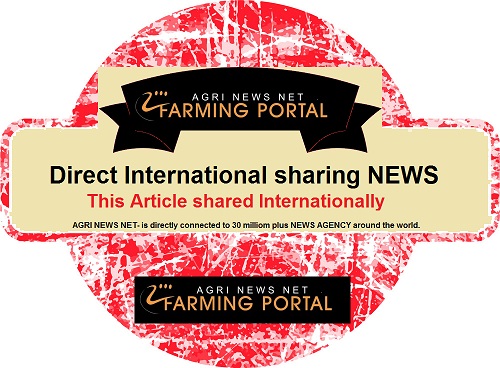There are two significant maize-producing countries in Southern Africa: SA and Zambia. These countries face a double-digit harvest decline in 2021/22. Still, this won’t risk causing a shortage in the region.
SA’s 2021/22 maize harvest is down by 10% from the previous season, estimated at 14.7-million tonnes. The reduced area mainly causes a decline in harvest. The poor yields in some regions following excessive rains during the season also weighed on the harvest. Still, this harvest will be sufficient to meet domestic maize consumption of 11.8-million tonnes, and SA will thus remain a net exporter of the commodity.
In the case of Zambia, the 2021/22 maize harvest is down by 25% from the prior season to 2.7-million tonnes. Unlike SA, which struggled with excessive rains during the season, Zambia faced the opposite — delayed rains at the start of the season and prolonged dryness. These caused a decline in yields and led to farmers planting less area than in the 2020/21 season. Still, Zambia’s 2.7-million tonnes harvest will be sufficient to meet domestic consumption of roughly 2-million tonnes. This means the country could also remain a net exporter of maize.
In the past, the Zambian government would institute export bans when its maize production declined notably, even if it would still be sufficient to meet domestic demand. This was an attempt to influence domestic prices in the interests of consumers. However, the unintended consequence of such policies is the negative effect on farmers and agribusiness, which typically miss out on higher global prices that would improve their profitability.
The Zambian government has signalled that it will not limit exports this season. This follows calls by multinationals including the World Trade Organization, World Food Programme and UN Food & Agriculture Organization which discourage countries from implementing restrictive trade policies. A ban would not be suitable for the current environment of elevated global food prices and the rising need for supplies in poor countries.
Within the Southern and East Africa regions Zimbabwe, Botswana, Mozambique and Namibia will likely require maize imports to meet their domestic needs later this year and into 2023. SA could have as much as 3-million tonnes for export, which is even higher than Zambia’s overall maize production. This will help boost supplies for countries in need in the region. But some countries are still reluctant to import genetically modified maize, especially Kenya. This limits SA’s market participation as the country’s maize production is about 80% genetically modified.
SA has embraced this technology since the early 2000s. As I have noted repeatedly before its introduction average maize yields were about 2.4 tonnes per hectare. This has increased to an average of 5.6 tonnes per hectare as of the 2020/21 production season. Meanwhile, the overall sub-Saharan African maize yield remains low, averaging below 2 tonnes per hectare.
Admittedly, yields are also influenced by improved germplasm (enabled by non-genetically modified biotechnology) and improved low and no-till production methods (facilitated through herbicide-tolerant genetically modified technology). Other benefits include labour savings and reduced insecticide use, as well as enhanced weed and pest control.
In such cases of limitations in imports because of regulations, Zambia stands to benefit from the markets that import non-genetically modified maize. For example, according to the US department of agriculture, Kenya currently faces a shortfall in its maize requirement in the current season of about 700,000 tonnes.
According to data from the International Grains Council, Kenya’s expected 700,000 tonnes of maize imports account for 21% of Sub-Saharan Africa’s anticipated maize imports of 3.4-million tonnes in the 2021/22 season.
Zambia and Tanzania are therefore likely to be the leading suppliers of maize to Kenya this season, though Tanzania’s role will be limited. It expects its domestic maize harvest to fall by 16% this season to 5.9-million tonnes. This decline is due to drought at the start of the 2021/22 season, combined with armyworm infestations and reduced fertiliser usage in some regions because of prohibitively higher prices. The consequence of the fall in production and firmer domestic consumption means the country could have less maize for export markets.
Data from the US department of agriculture show Tanzania’s maize exports could decline from 800,000 tonnes last season to 100,000 tonnes this year. Such a drop would leave little for Kenya’s maize needs. As a result, Zambia will have to step in and fill the shortfall. If the constraints on genetically modified maize imports were non-existent, SA would have played a notable role in stabilising Kenya’s maize needs.
In sum, while Zambia’s maize production could fall notably this year, the country will remain a significant player in export activity in the sub-Saharan region. Kenya will be the primary market for exports. Zambia will join leading exporter SA in fulfilling regional maize needs.
Tanzania, which is typically instrumental in filling the maize shortfall in the East Africa region, will likely have a limited role this year. The likelihood that Zambia will not ban exports is commendable. This is an issue that has worried me since I began observing the estimates of a decline in maize harvest in several countries within Southern and East Africa.
In the long term, I believe African countries should review their limits on growing and importing genetically modified maize. The likes of the EU, which for roughly 25 years opposed genetically modified maize, is slowly opening up for imports. China is also on the way to approving genetically modified grains for domestic cultivation.
Africa should note these changes and start embracing the technological advancements in agriculture that would boost yields. I am not oblivious to various nations’ concerns over seed ownership and other issues. There should be close cooperation between the technology developers, African governments and farmers to find a path to accommodate all affected parties’ concerns.













